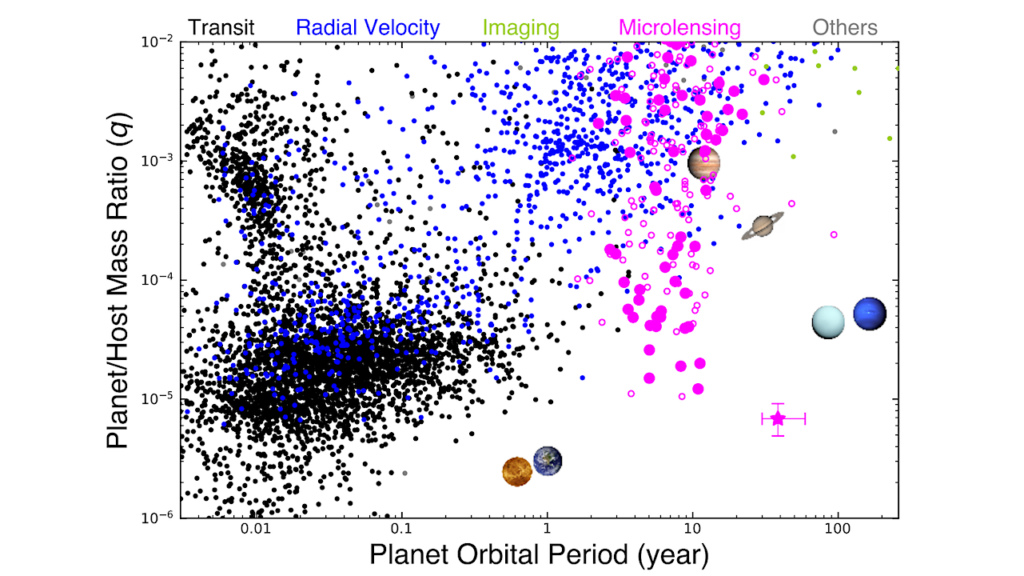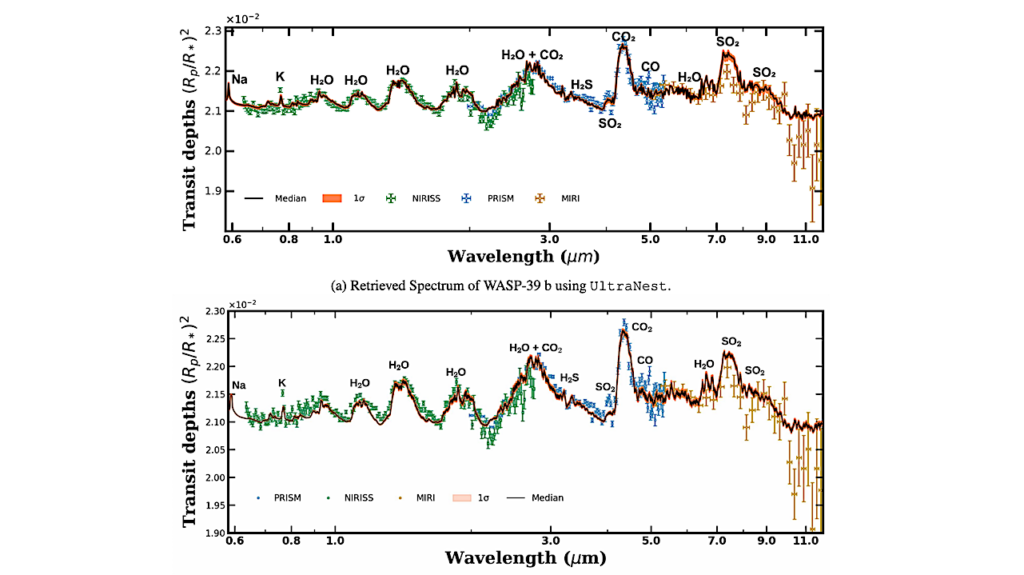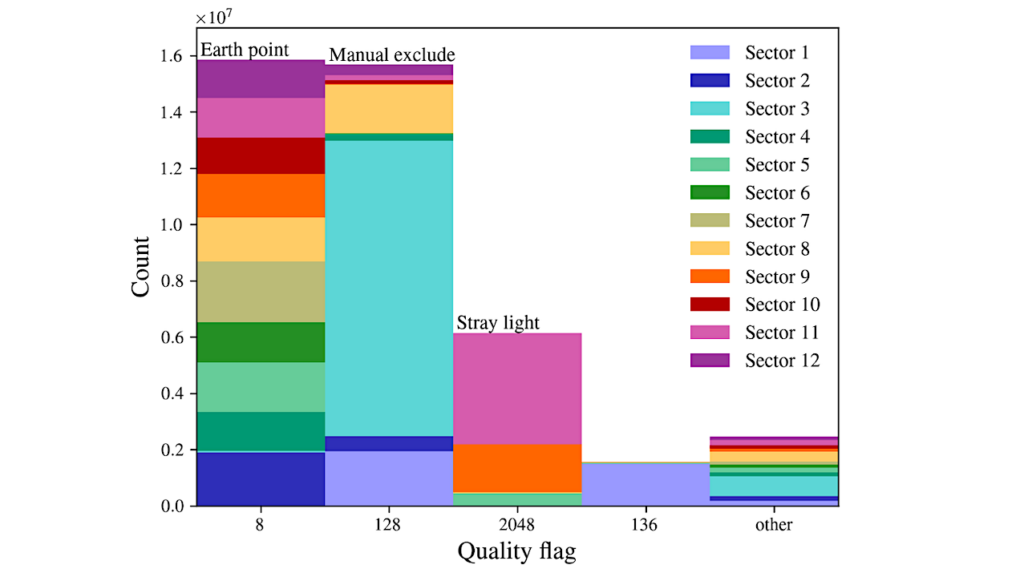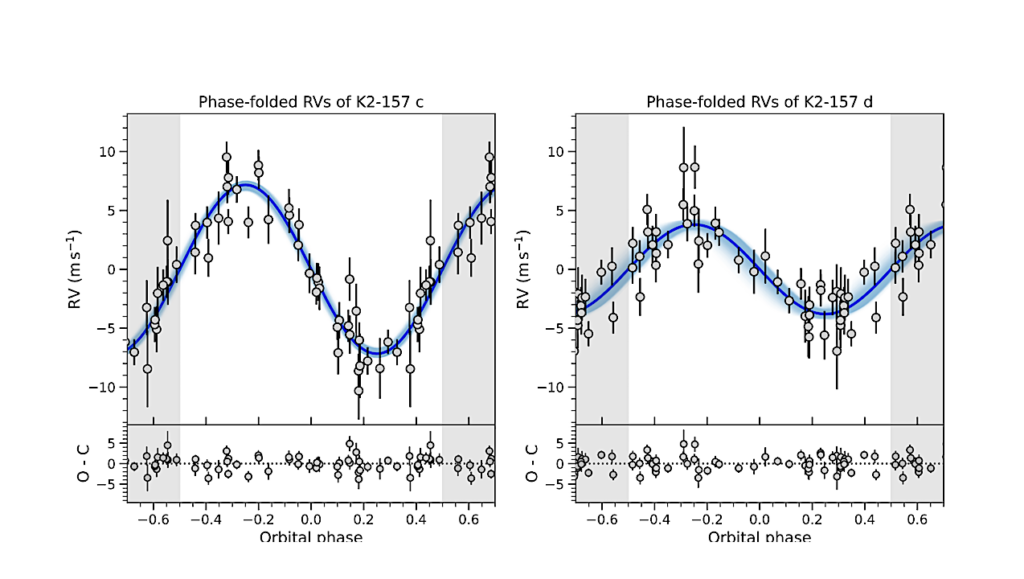The Stability Of Unevenly Spaced Planetary Systems
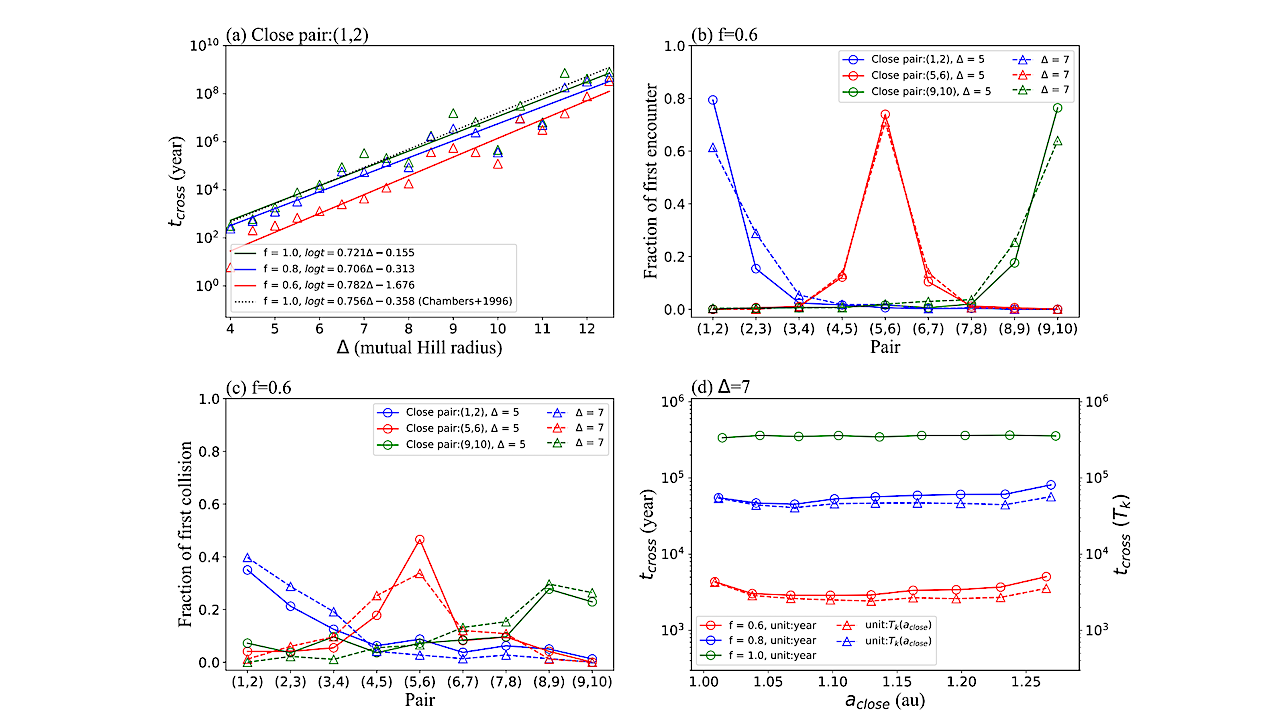
Studying the orbital stability of multi-planet systems is essential to understand planet formation, estimate the stable time of an observed planetary system, and advance population synthesis models.
Although previous studies have primarily focused on ideal systems characterized by uniform orbital separations, in reality a diverse range of orbital separations exists among planets within the same system. This study focuses on investigating the dynamical stability of systems with non-uniform separation.
We considered a system with 10 planets with masses of 10−7 solar masses around a central star with a mass of 1 solar mass. We performed more than 100,000 runs of N-body simulations with different parameters. Results demonstrate that reducing merely one pair of planetary spacing leads to an order of magnitude shorter orbital crossing times that could be formulated based on the Keplerian periods of the closest separation pair.
Furthermore, the first collisions are found to be closely associated with the first encounter pair that is likely to be the closest separation pair initially. We conclude that when estimating the orbital crossing time and colliding pairs in a realistic situation, updating the formula derived for evenly spaced systems would be necessary.
Sheng Yang, Liangyu Wu, Zekai Zheng, Masahiro Ogihara, Kangrou Guo, Wenzhan Ouyang, Yaxing He
Comments: 6 pages, 3 figures, accepted for publication in Icarus
Subjects: Earth and Planetary Astrophysics (astro-ph.EP)
Cite as: arXiv:2308.16798 [astro-ph.EP] (or arXiv:2308.16798v1 [astro-ph.EP] for this version)
https://doi.org/10.48550/arXiv.2308.16798
Focus to learn more
Journal reference: Icarus, Volume 406, 2023, 115757
Related DOI:
https://doi.org/10.1016/j.icarus.2023.115757
Focus to learn more
Submission history
From: Sheng Yang
[v1] Thu, 31 Aug 2023 15:20:32 UTC (135 KB)
https://arxiv.org/abs/2308.16798
Astrobiology


